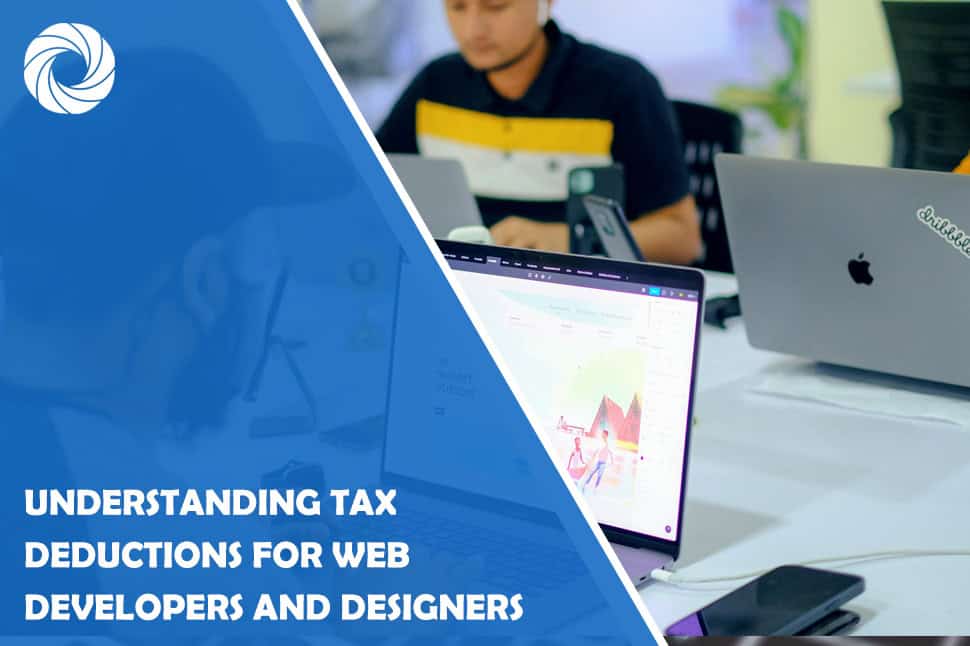Web developers and designers are often seen as the main creators and innovators of the virtual world, where they take an idea and create visually appealing and fully functional websites. However, this is one side of the story when you pursue contract work and being your boss. The first thing that comes to mind is managing a business and all that entails, including paying taxes. Having to pay taxes on your own is the flipside. Don’t worry, tax deductions are at your service in minimizing your tax burden and saving more money. There are a lot more tax deductions available than most people know.
1. Home Office Deduction: Your Digital Command Center
Most internet users now make a living without an office, with the home office being the most commonly used workspace for individuals. Every individual or business owner who dedicates a part of their house exclusively for work can benefit from Work From Home Tax Deductions, such as the home office expense deduction.
This deduction helps cover essential costs, including rent, utilities, phone, and internet. For example, if the home office occupies 10% of the house, up to 10% of these expenses may be claimed. However, this benefit must be used appropriately, as the area claimed must be solely designated for work activities.
2. Tech Tools and Software: Essential for Your Craft
It is impossible to be a web developer or a designer without the technical aspect of the work. Purchasing design tools or developing and maintaining them might also be considered tax-deductible, just like any other business operating expense. Among them are the following:
- Programming platforms like Visual Studio or GitHub subscriptions are examples of software, as are creative tools like Adobe Creative Suite, Sketch, or Figma.
- gadgets like desktops, laptops, and monitor PCs.
- accessories, including pens, iPads, and keyboards.
Don't forget to include the cost of maintaining outdated machinery because every dollar counts. It is crucial to monitor these expenses, as they will reduce the amount of laborious work and the likelihood of tax errors.
3. Education and Training: Investing in Growth
In the rapidly evolving digital era, professionals must adapt and enhance their abilities. As a result, expenses are incurred when learning a new programming language, improving design abilities, or even studying user experience design, all of which fall within the deductibles area. This is especially true for the online courses and certification programs offered by the most well-known portals, such as LinkedIn, Coursera, and Udemy. Additional choices include reading books or e-books or going to workshops or boot camps focused on coding and design. To stay relevant in a cutthroat market, it's also a smart tax planning strategy to invest in both your company and yourself.
4. Marketing and Client Acquisition: Growing Your Business
You may also qualify for statutory tax incentives if you use marketing efforts, such as ads, to attract customers to your service. Certain specific marketing and advertising expenses, such as those included below, are also eligible for tax breaks:
- creating and managing a personal website to promote one's artwork.
- putting ads on other websites, such as LinkedIn, Facebook, and others.
- Business cards, brochures, and other print products can also be used for branding.
5. Travel Expenses: Meeting Clients and Expanding Reach
This clause applies, for instance, when the client must physically visit the service provider or for any other work-related purpose. These can also be tax-deductible business expenses, such as lodging, food, flights, car rentals, etc.
Insider tip: Make sure the statements are up-to-date if you want to reimburse yourself for your expenses. These guidelines allow you to maintain your operations organized and current while managing your appropriate tax expenses.
Conclusion
Gaining a thorough understanding of tax nuances as a web developer or designer can help you stay organized, make wise decisions, manage your money, and, above all, reduce your taxable income within the permitted ranges.
Throughout your digital journey, you can utilize time-saving and sophisticated technologies to prevent losing the majority of your hard-earned money to taxes or running into any last-minute turmoil or haste.
